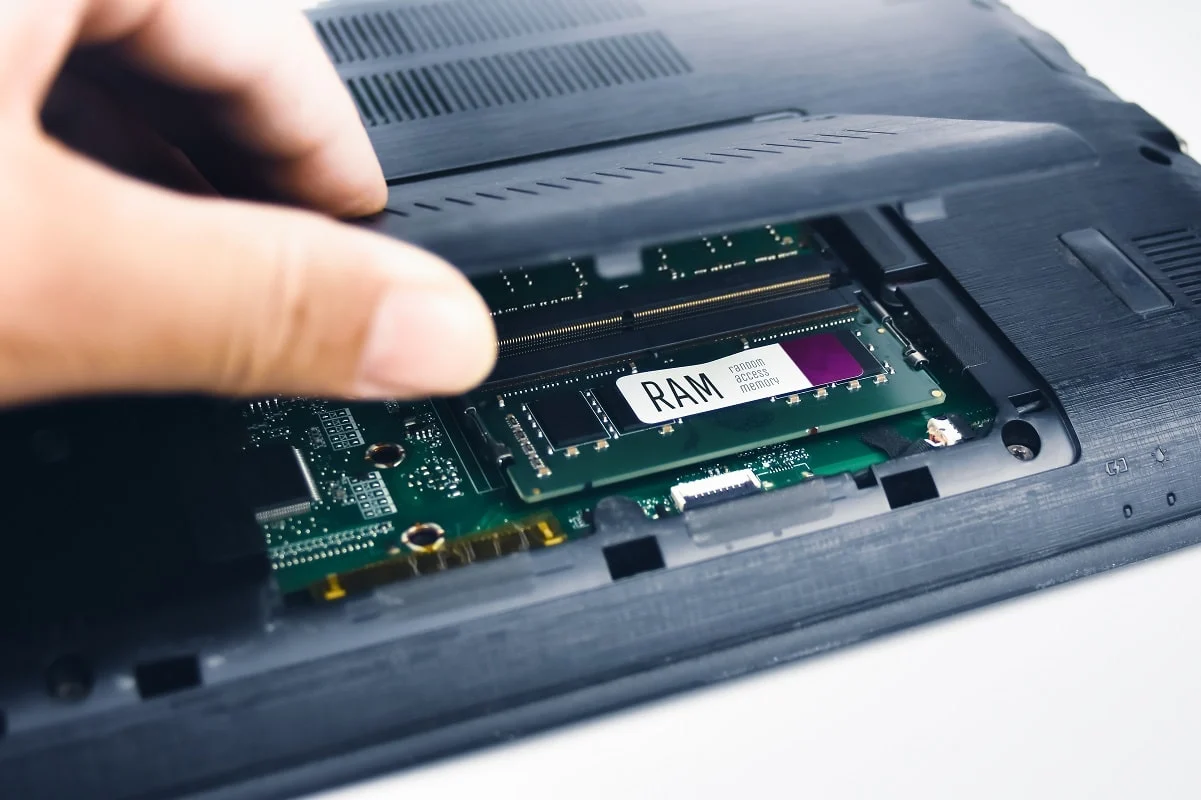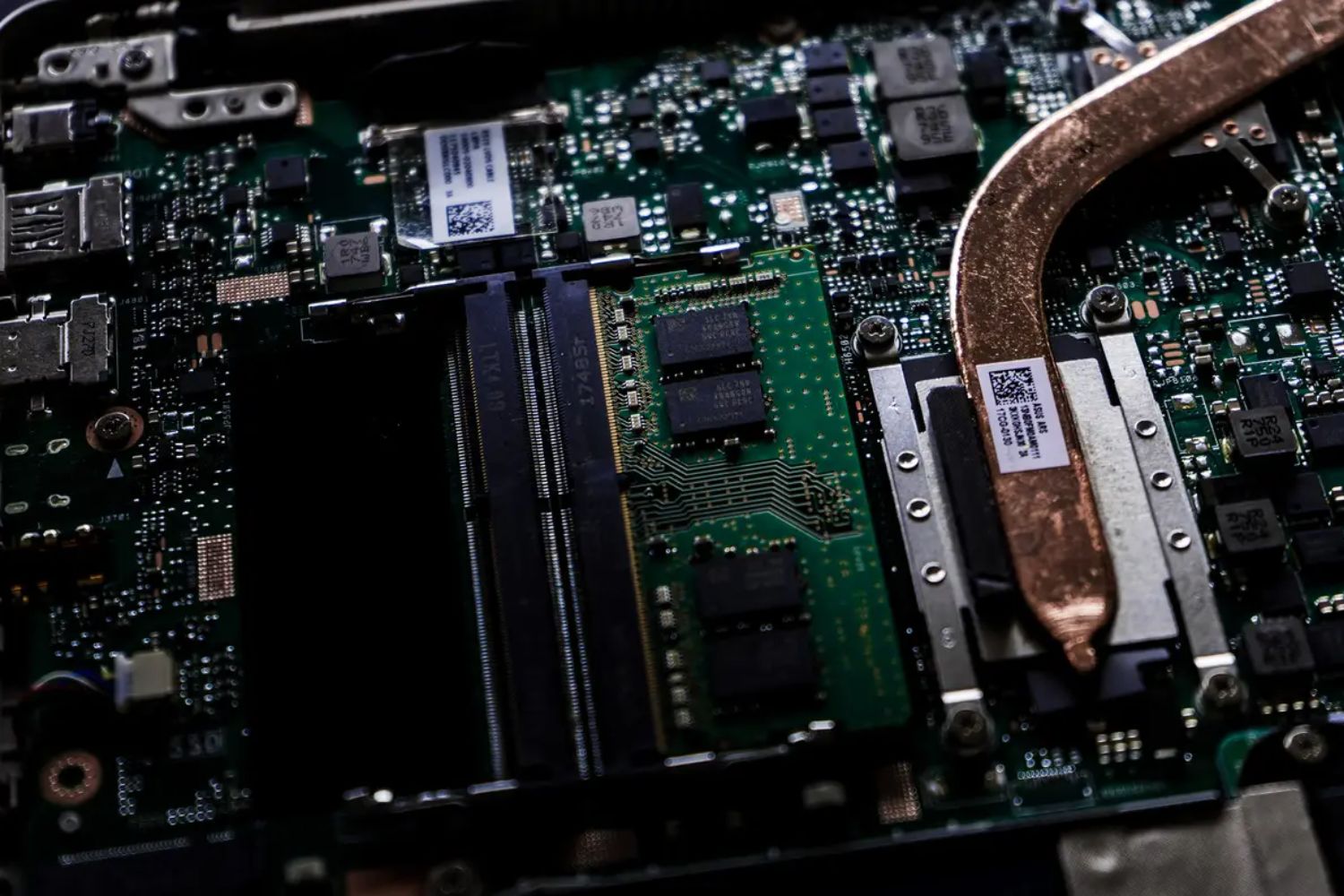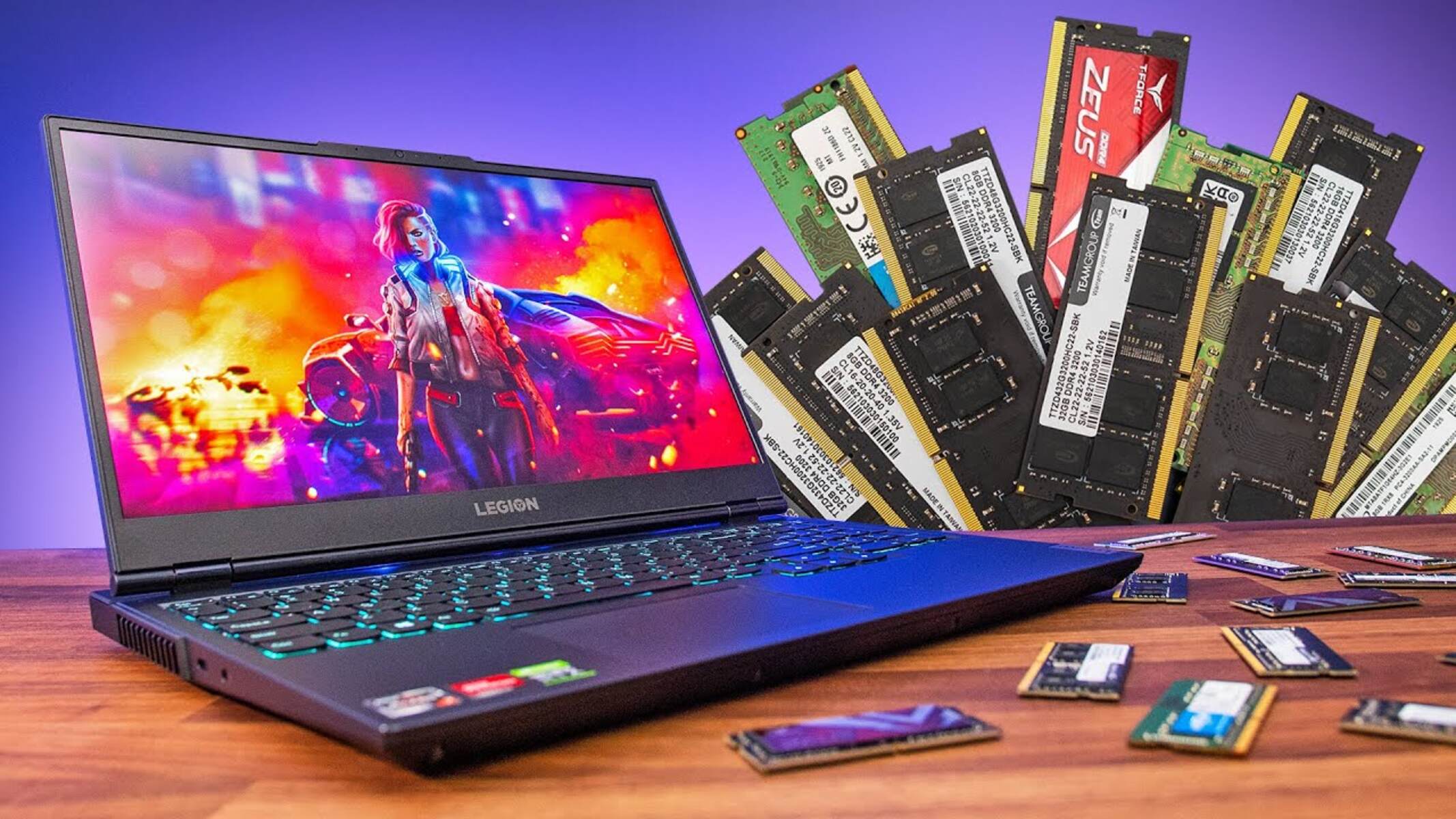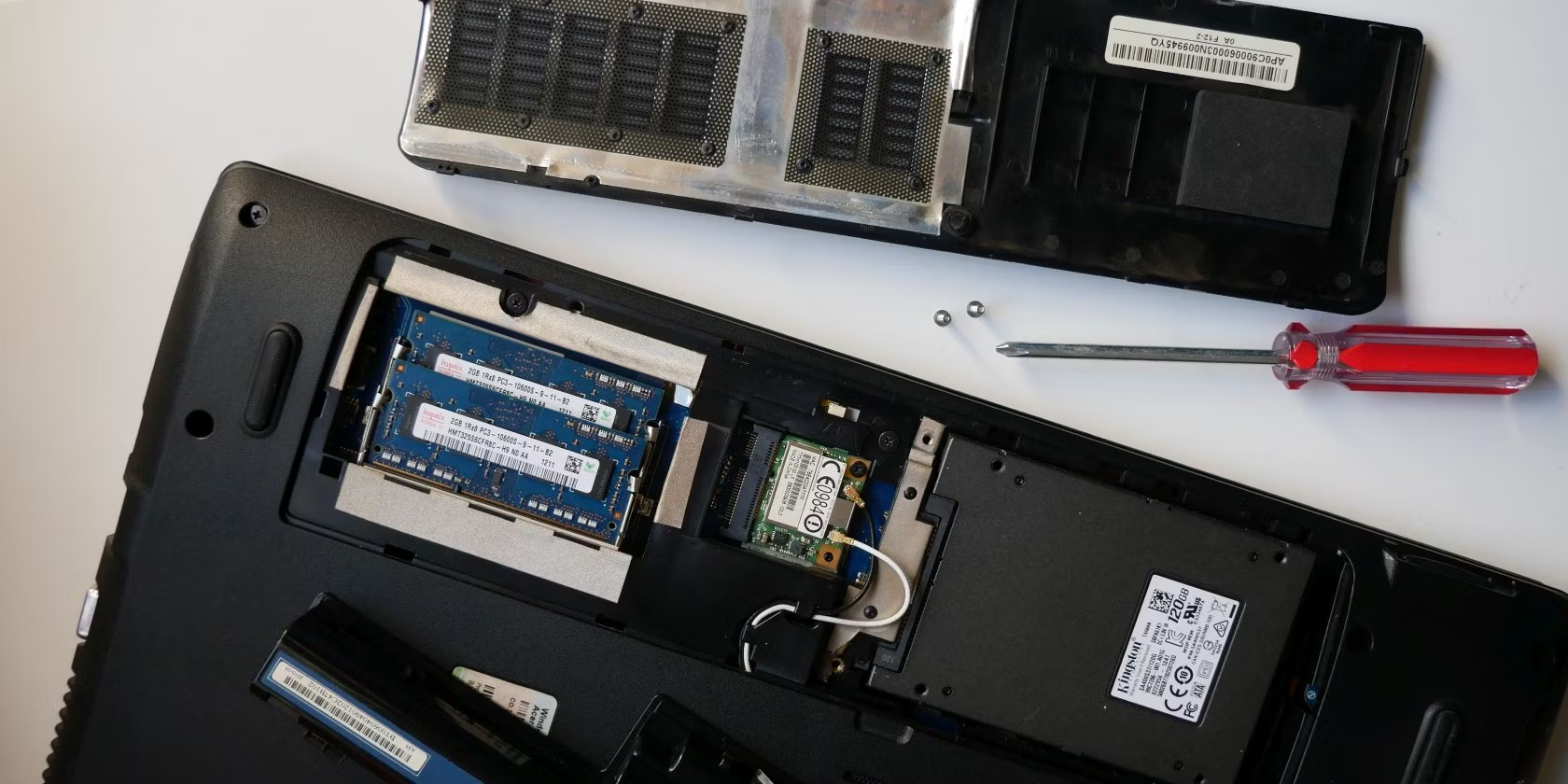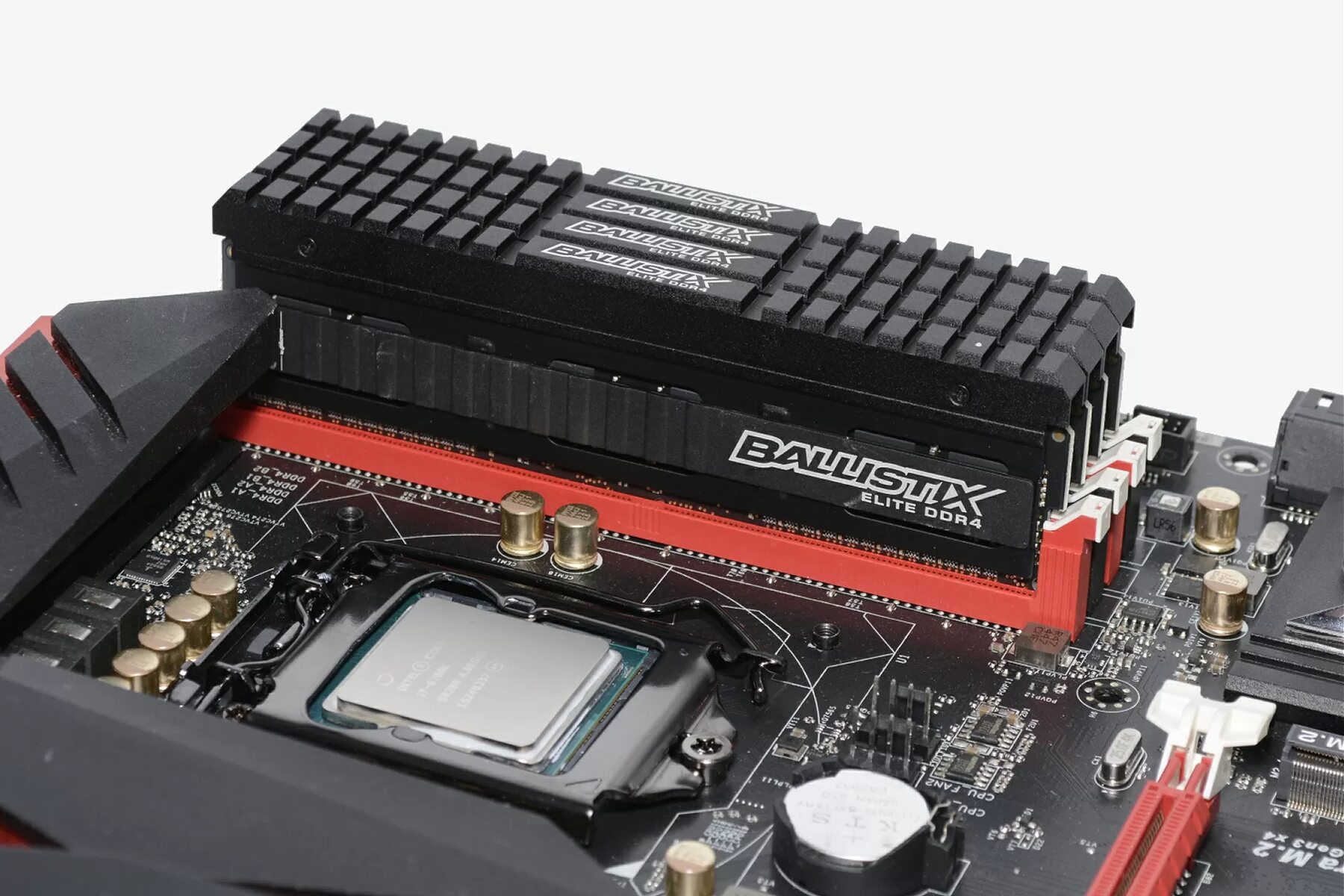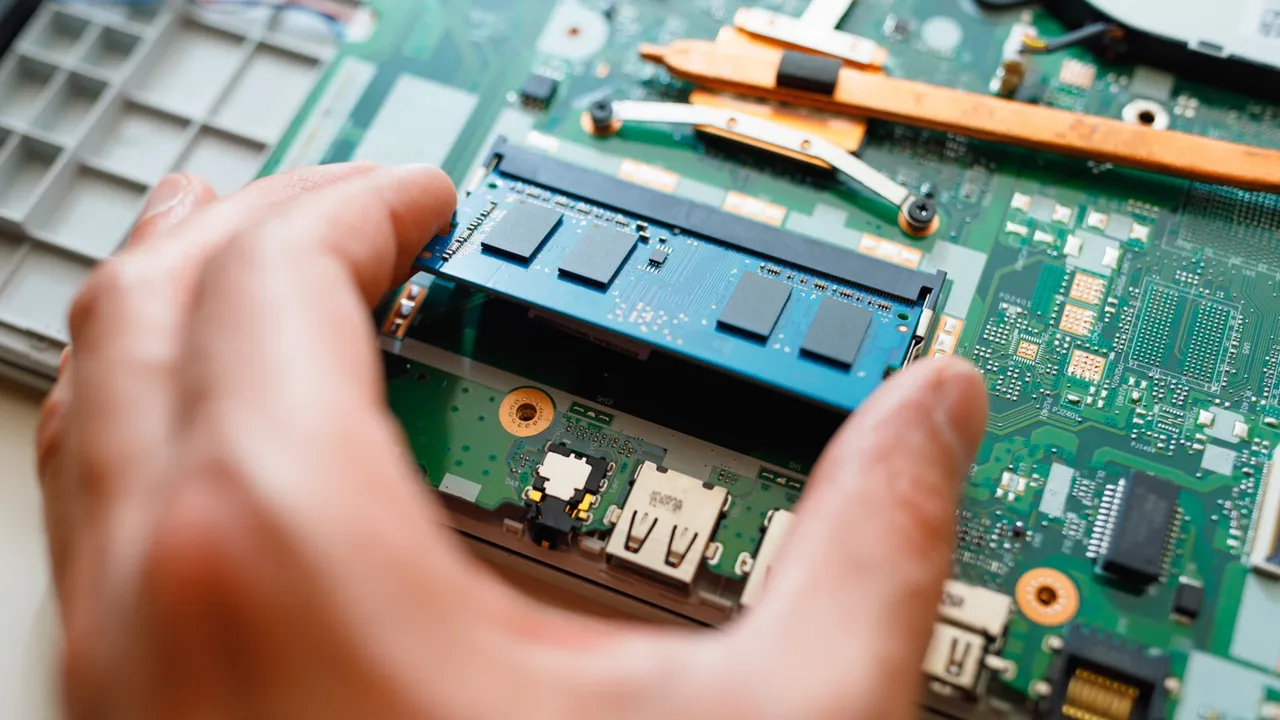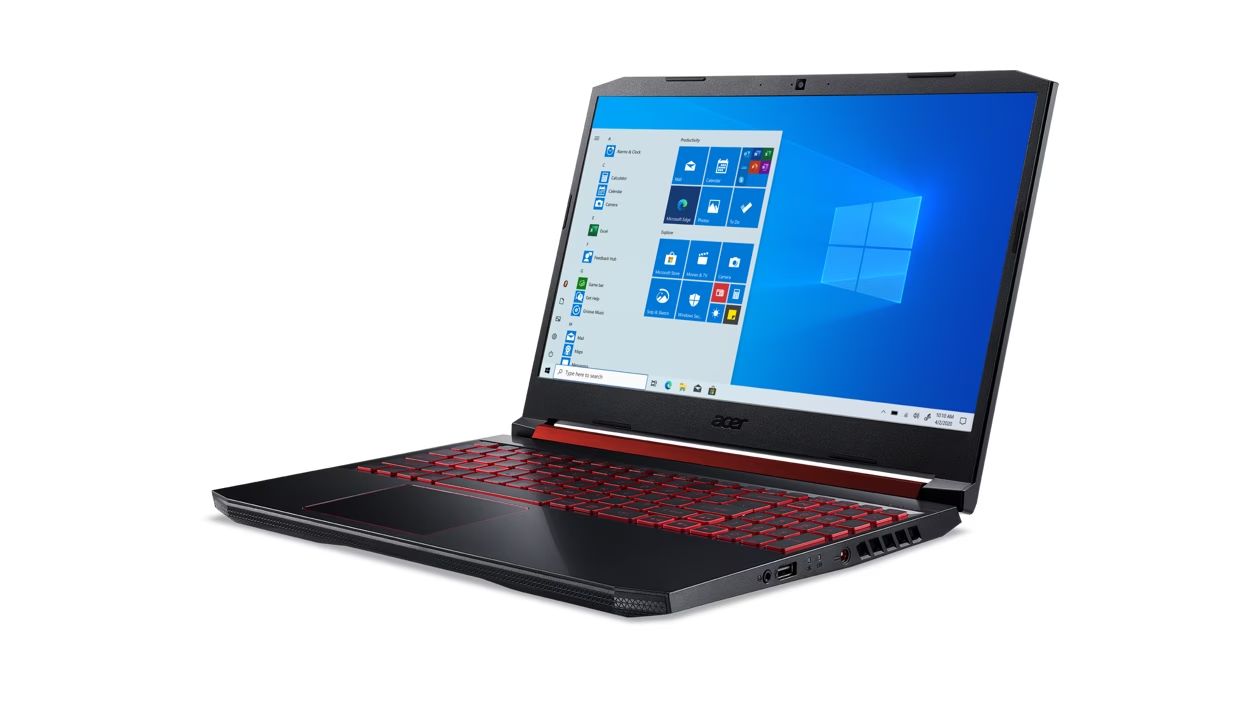Introduction
Welcome to our guide on determining how much RAM is enough for a laptop. RAM, or Random Access Memory, is a critical component of any computer system that plays a vital role in its performance and multitasking capabilities. Whether you’re a casual user or a power user, choosing the right amount of RAM for your laptop is crucial in ensuring optimal performance.
RAM acts as a temporary storage space for your computer and holds data that is actively being used by the operating system and running applications. The more RAM your laptop has, the more data it can store for quick access, which in turn leads to smoother operation and improved efficiency.
When it comes to determining how much RAM you need for your laptop, there are several factors that you should consider. These factors include your usage patterns, the type of applications you run, and your budget.
In this guide, we’ll walk you through the minimum RAM requirements for different purposes and provide recommendations for the optimal amount of RAM for various tasks. We’ll also debunk some common misconceptions about RAM and explain how to check the RAM usage on your laptop. Additionally, we’ll discuss the process of upgrading RAM on your laptop if you find that you need more.
By the end of this guide, you’ll have a clearer understanding of how much RAM is suitable for your laptop and what advantages having more RAM can bring. So, let’s dive in and explore the world of laptop RAM requirements!
Factors to consider when determining RAM requirements
When determining the RAM requirements for your laptop, it’s important to consider several factors that will directly impact your system’s performance and usability. These factors include:
- Usage patterns: Consider how you use your laptop on a daily basis. Are you a casual user who primarily browses the internet and uses basic applications? Or are you a power user who runs resource-intensive software like video editing programs or virtual machines? The more demanding your tasks, the more RAM you’ll need.
- Operating system: Different operating systems have varying RAM requirements. For example, Windows 10 typically recommends a minimum of 4GB for 64-bit systems, while macOS suggests at least 8GB for optimal performance. Linux distributions also have their own RAM requirements which vary depending on the specific distribution.
- Application requirements: The types of applications you use regularly will determine your RAM needs. If you often work with memory-heavy software like graphic design applications or CAD programs, you’ll benefit from having more RAM to ensure smooth operation and prevent slowdowns.
- Multi-tasking: If you’re someone who frequently runs multiple applications simultaneously or likes to have many browser tabs open, you’ll need more RAM to handle the increased workload. The more tasks you have going on at once, the more RAM you’ll need to prevent your system from becoming sluggish.
- Future-proofing: It’s essential to consider how long you plan to keep your laptop before upgrading. If you’re looking for a device that will remain capable of running new software and operating system updates for several years, opting for more RAM than you currently need is advisable. This way, you’ll be prepared for any future requirements.
By taking these factors into account, you can determine how much RAM you’ll need for your specific usage requirements and ensure that your laptop performs optimally for your tasks. Additionally, it’s worth considering the cost implications of upgrading RAM, as more RAM typically comes with a higher price tag. Balancing your needs and your budget is crucial in making an informed decision.
Minimum RAM requirements for different purposes
When it comes to determining the minimum RAM requirements for different purposes, it’s important to consider the nature of the tasks you’ll be performing on your laptop. While these minimum requirements may allow you to run basic applications and perform essential tasks, keep in mind that having more RAM can greatly enhance performance and improve your overall user experience. Here are some general guidelines for minimum RAM requirements:
- Basic web browsing and productivity tasks: If you primarily use your laptop for basic web browsing, checking emails, and using productivity software like word processors and spreadsheets, a minimum of 4GB of RAM should be sufficient. However, keep in mind that having more RAM can improve multitasking capabilities and allow for a smoother experience.
- Media consumption and streaming: For streaming videos, listening to music, and viewing multimedia content, a minimum of 4GB to 8GB of RAM is recommended. This will ensure that your laptop can handle the demands of media playback without experiencing slowdowns.
- Photo editing and casual gaming: If you want to edit photos or play casual games on your laptop, a minimum of 8GB of RAM is generally recommended. These tasks can be quite resource-intensive, and having more RAM will enable smoother editing and gaming experiences.
- Graphic design and video editing: For more advanced tasks like graphic design or video editing, a minimum of 16GB of RAM is typically recommended. These tasks involve working with large files and complex software, so having adequate RAM is crucial for efficient workflow and preventing system slowdowns.
- Virtual machines and software development: If you frequently run virtual machines or work on software development projects, a minimum of 16GB to 32GB of RAM is advisable. These tasks require substantial memory resources for running multiple environments or compiling complex code.
It’s important to note that these minimum RAM requirements serve as a starting point, and your specific needs might vary based on the specific applications and tasks you engage in. Always check the recommended requirements for the software you use and consider your multitasking habits to ensure optimal performance on your laptop.
Now that we’ve covered the minimum RAM requirements, let’s delve into the recommended RAM specifications for different purposes to maximize your laptop’s capabilities.
Recommended RAM for different purposes
While the minimum RAM requirements provide a baseline for running specific tasks, having more RAM can greatly enhance your laptop’s performance, allowing for better multitasking and smoother operation. Here are some recommended RAM specifications for different purposes:
- Everyday computing and internet browsing: For casual users who primarily browse the internet, use social media, and handle basic office tasks, 8GB of RAM is typically sufficient. This amount of RAM allows for smooth web browsing, multitasking with several browser tabs open, and running productivity software without noticeable slowdowns.
- Media consumption and streaming: If you enjoy streaming high-definition videos, listening to music, and engaging in multimedia content, 8GB to 16GB of RAM is recommended. This extra memory ensures smooth playback and allows you to multitask without impacting your streaming experience.
- Photo and video editing, and gaming: For enthusiasts who work on photo editing, video editing, or indulge in gaming, 16GB to 32GB of RAM is ideal. This additional memory enables faster rendering times, smoother editing experiences, and better gaming performance, especially for newer and more demanding titles.
- Virtual machines and software development: If you frequently utilize virtual machines or engage in software development projects, it’s recommended to have 32GB or more of RAM. Running multiple virtual environments simultaneously or working with resource-intensive development tools requires ample memory to ensure efficient performance.
Remember that these are general recommendations, and your specific needs may vary based on the intensity and scale of the tasks you regularly undertake. Additionally, it’s important to consider your future needs and the lifespan of your laptop. Investing in a higher RAM capacity now can help future-proof your system, allowing it to handle more demanding applications and operating systems for years to come.
Ultimately, selecting the right amount of RAM for your laptop involves weighing your usage patterns, considering your specific requirements, and aligning them with your budget. It’s essential to strike a balance between optimal performance and cost-effectiveness to get the most out of your laptop.
Now that we have explored the recommended RAM specifications, let’s explore the benefits that having more RAM can bring to your laptop.
Benefits of having more RAM
Having an adequate amount of RAM is essential for maintaining smooth and efficient operation on your laptop. While meeting the minimum requirements is necessary, having more RAM can provide several benefits and significantly enhance your computing experience. Here are the key advantages of having more RAM:
- Improved multitasking: More RAM allows your laptop to handle multiple tasks simultaneously without experiencing slowdowns. Whether you’re multitasking with several applications, running virtual machines, or working on resource-intensive tasks like photo editing or video rendering, having more RAM ensures smooth performance and efficient task-switching.
- Faster application loading times: With more RAM available, applications can load and respond faster. This means you can launch software, open large files, and switch between applications more quickly, resulting in a more seamless and productive workflow.
- Enhanced performance for resource-intensive tasks: Memory-intensive applications, such as video editing software or complex 3D modeling programs, require a significant amount of RAM to run smoothly. Having more RAM allows these applications to access the necessary resources for faster rendering times, smoother editing experiences, and reduced lag.
- Better gaming experience: Gaming on your laptop can be greatly improved with more RAM. Games with large textures, expansive open-world environments, and high-resolution graphics benefit from having ample RAM to store and process data quickly. More RAM helps minimize lag, improve frame rates, and enhance overall gaming performance.
- Facilitates future software updates: Operating systems and software applications continually evolve, and new updates often require more system resources. By having more RAM, you’ll be better equipped to handle future updates without experiencing significant performance degradation. This helps prolong the useful life of your laptop.
As you can see, having more RAM provides numerous benefits that can significantly improve your laptop’s performance, speed, and overall user experience. It allows you to handle demanding tasks with ease, reduces lag, and ensures smooth operation even when running multiple applications simultaneously.
Now that we understand the benefits of having more RAM, let’s address some common misconceptions about RAM that you may come across.
Common misconceptions about RAM
RAM, being a critical component of a computer system, is often subject to misconceptions and misunderstandings. Let’s address some common misconceptions about RAM:
- More RAM means a faster computer: While having more RAM can improve performance, it doesn’t directly translate to a faster computer. RAM primarily affects multitasking and the ability to handle memory-intensive tasks. Other factors like the processor, storage drive, and graphics card also play significant roles in overall system speed.
- Adding more RAM automatically makes all applications faster: While additional RAM can improve performance for memory-intensive applications, it doesn’t guarantee that every application will run faster. Some programs are limited by other factors such as CPU or storage speed, so increasing RAM won’t have a noticeable impact on their performance.
- All RAM sticks must have the same capacity: It’s not necessary for all RAM sticks to have the same capacity in a computer system. However, using matching RAM modules can improve compatibility and enable dual-channel or quad-channel memory modes, which can provide a slight performance boost in certain scenarios.
- Closing unused applications will free up RAM: Closing applications may free up RAM temporarily, but modern operating systems are designed to manage RAM efficiently. Unused RAM is often utilized as a cache to store frequently accessed data, improving overall system performance. Manually closing applications won’t yield significant benefits unless they are consuming excessive resources.
- Excessive RAM will always result in better performance: While more RAM can be beneficial for memory-intensive tasks, having an excessive amount beyond your actual requirements won’t necessarily lead to better performance. The excess RAM is simply unused, and the system won’t make use of it unless it’s required by running applications.
By understanding these common misconceptions, you can have a more accurate perspective on the role and impact of RAM in your laptop. Remember, it’s crucial to consider your specific needs, usage patterns, and the balance between RAM capacity and other hardware components when determining the optimal configuration for your computer system.
Now that we’ve addressed these misconceptions, let’s learn how to check the RAM usage on your laptop and ensure that you have the right amount of RAM for your tasks.
How to check RAM usage on your laptop
If you’re unsure about how much RAM your laptop is using and want to check its usage, there are several methods you can employ. Here’s how to check RAM usage on your laptop:
- Task Manager (Windows): On Windows laptops, you can use the Task Manager to monitor RAM usage. Press
Ctrl + Shift + Escto open the Task Manager, then click on the “Performance” tab. Under the “Memory” section, you’ll find information about how much RAM is currently in use, as well as the total amount of RAM installed on your laptop. - Activity Monitor (macOS): For macOS users, you can utilize the Activity Monitor to check RAM usage. Open Spotlight by pressing
Command + Spaceand search for “Activity Monitor”. Once opened, click on the “Memory” tab, and you’ll see details about the memory usage, including the amount of RAM being used, the amount free, and other related information. - Third-party tools: There are various third-party tools available that provide detailed information about your laptop’s RAM usage. Some popular options include CPU-Z, HWMonitor, and Speccy. These tools can provide comprehensive insights into your system’s hardware, including RAM utilization.
By using these methods, you can easily monitor how much RAM is being used on your laptop. This information can help you determine if your current RAM capacity is adequate for your needs or if an upgrade is necessary.
Now that you know how to check RAM usage, let’s explore the process of upgrading RAM on your laptop if you find that you need more memory.
Upgrading RAM on your laptop
If you find that your laptop’s current RAM capacity is insufficient for your needs, you have the option to upgrade the RAM. Here’s a step-by-step guide on how to upgrade the RAM on your laptop:
- Identify the RAM type and maximum capacity: First, determine the type of RAM that is compatible with your laptop. This information can usually be found in your laptop’s user manual or on the manufacturer’s website. Also, check the maximum RAM capacity supported by your laptop.
- Purchase the appropriate RAM module: Once you know the type and maximum capacity of RAM your laptop can support, purchase the appropriate RAM module. Ensure that you buy from a reputable source and choose a module that matches the specifications of your laptop, such as speed and capacity.
- Prepare your laptop: Before installing the new RAM, power off your laptop and disconnect it from any power source. Also, make sure to ground yourself to prevent any static electricity discharge that could damage the components.
- Access the RAM slots: Depending on your laptop model, accessing the RAM slots may involve removing a panel on the bottom of the laptop or removing the keyboard. Consult your laptop’s user manual for specific instructions on how to access the RAM slots.
- Remove the old RAM module: Gently spread apart the retention clips on either side of the RAM module to release it. Carefully remove the module from the slot by pulling it straight out at a slight angle.
- Install the new RAM module: Align the new RAM module with the slot at the same angle as the removed module. Insert it firmly and evenly, making sure it is fully seated in the slot. The retention clips should automatically lock into place, securing the module.
- Close up and test: If you had to remove a panel or keyboard, reattach them carefully. Once everything is reassembled, reconnect the power source and turn on your laptop. Verify that the new RAM module is recognized by checking the system information or using a tool like Task Manager or Activity Monitor to confirm the increased RAM capacity.
It’s essential to note that laptop models can vary in terms of accessibility and upgradeability. Some laptops have soldered RAM, which means the RAM is permanently attached to the motherboard and cannot be upgraded. If this is the case with your laptop, unfortunately, upgrading the RAM may not be possible.
If you’re uncertain about the process, it’s recommended to consult a professional or refer to your laptop’s user manual for specific instructions tailored to your model.
Now that you know how to upgrade the RAM on your laptop, you can confidently expand your memory capacity to meet your computing needs.
Conclusion
Choosing the right amount of RAM for your laptop is crucial for optimal performance and a smooth computing experience. By considering factors such as your usage patterns, the type of applications you use, and your budget, you can determine the appropriate RAM capacity for your needs.
While minimum RAM requirements provide a baseline, having more RAM than the minimum can provide several benefits. It allows for improved multitasking, faster application loading times, enhanced performance for resource-intensive tasks like gaming and editing, and future-proofs your laptop against software updates.
It’s important to be aware of common misconceptions about RAM, such as the belief that more RAM automatically results in a faster computer or that closing unused applications frees up RAM. Understanding these misconceptions will ensure that you have a more accurate understanding of the role of RAM in your laptop’s performance.
If you want to check your laptop’s RAM usage, you can utilize the built-in Task Manager or Activity Monitor, or use third-party tools that provide more comprehensive information about your system’s memory utilization.
If you find that your current RAM capacity is insufficient, upgrading the RAM is an option. Follow the steps to identify compatible RAM, purchase the right module, and properly install it in your laptop. However, keep in mind that not all laptops can be upgraded, as some have soldered RAM that cannot be replaced.
In conclusion, understanding how much RAM is enough for your laptop involves considering your specific needs, balancing performance with budget, and being aware of the benefits and limitations of RAM. With the right amount of RAM, you can unlock the full potential of your laptop and enjoy a seamless computing experience.







